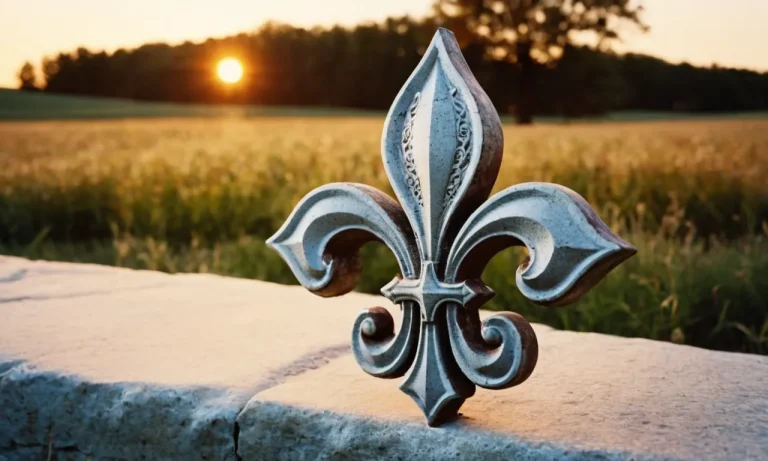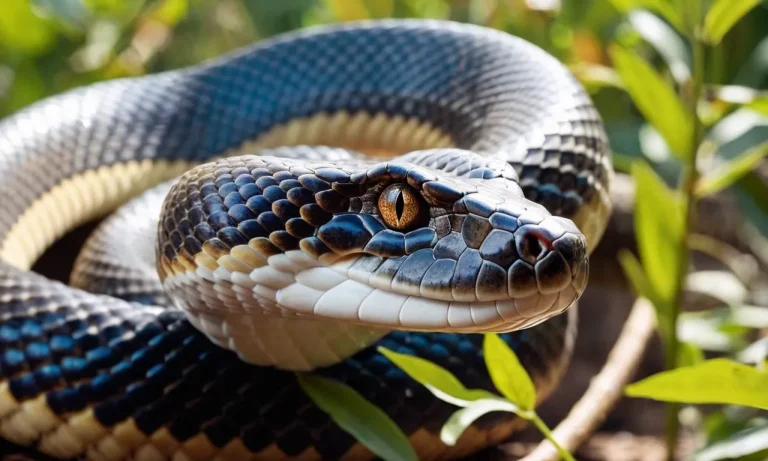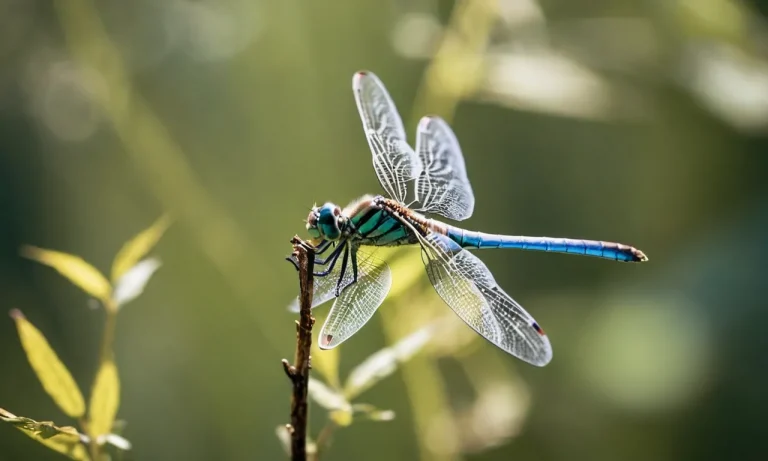Have you ever seen a shiny black beetle scurrying across the ground and wondered what deeper meaning or symbolism it might represent? If so, you’ve come to the right place!
In short: The black scarab beetle has been an important spiritual and cultural symbol in ancient Egypt, representing rebirth, renewal, eternity, and the sun. But its symbolic significance goes even deeper than that across cultures.
In this comprehensive guide, we’ll explore the history, mythology, symbolism, and spiritual meanings behind the black scarab beetle. We’ll look at ancient Egyptian scarab amulets, scarab appearances in dreams and omens, scarab meanings in Christianity, Freemasonry, and Alchemy, and more.
We’ll also examine some common questions surrounding this mystical beetle.
Appearance and History of the Sacred Scarab Beetle
Physical traits and identification
The black scarab beetle (Scarabaeus sacer) is a species of dung beetle that is distinguished by its jet black coloring and large size, usually measuring around 1.5 inches long. Its hard and shiny forewings (elytra) cover a majority of its body, protecting the more delicate portions underneath when the beetle rolls the dung into a ball.
The beetle’s oval-shaped head points downward and its thick legs have ridges that are perfect for gaining purchase in the sandy terrain of its native Egypt.
In ancient times, these physical traits of the black scarab resulted in an association with rebirth and transformation in Egyptian mythology. The beetle’s practice of laying its eggs in dung, which its offspring would use for nourishment after hatching, mirrors the daily rebirth of the sun in the skies over Egypt.
Origins and ancient significance in Egypt
The Egyptians observed the natural behaviors of the sacred scarab beetle (Scarabaeus sacer) as early as 3000 BCE. They believed the beetle was symbolic of death, rebirth, and the afterlife. Scarabs form dung into round balls, roll them along routes, and bury them as food provisions, all of which reminded the Egyptians of their sun god rolling the solar disc across the sky daily, dying at sunset and being reborn at dawn.
According to some records, Egyptians placed a carved scarab amulet over the hearts of mummies when they were buried, intended to bring the deceased luck in the afterlife. Beginning in the Middle Kingdom in 2040 BCE, nobles often wore rings or seals with scarab images.
Heart scarabs had floral motifs that represented new beginnings, underscoring links to renewal and the afterlife.
Use in amulets and jewelry
The sacred scarab beetle was one of the most common iconographic symbols used in ancient Egyptian amulets and jewelry, thought to impart magical protection against malevolent spirits. Symbols of the sun god Ra, these amulets were also placed amongst grave items to represent resurrection and protect the dead in the afterlife.
Archaeologists have discovered many varieties of scarab amulets, from simple shapes to elaborately carved miniatures. While the poor may have carried crude earthenware scarabs, the wealthy wore rings, bracelets and necklaces made of precious materials like lapis lazuli or carnelian that featured gold and silver scarab pendants and charms.
Scarab iconography remains popular in modern jewelry, especially for pieces drawing inspiration from ancient Egyptian styles. Many spiritualists still carry or wear scarab talismans to tap into the protective energies they’ve carried through millennia.
Symbolism and Spiritual Meaning of the Black Scarab
Representation of rebirth and renewal
In ancient Egyptian mythology, the scarab beetle is a sacred symbol of rebirth and renewal. Black scarabs, in particular, represent the cycle of death and rebirth, signifying the rising sun, regeneration, and resurrection. According to myths, the black scarab would emerge from the rotting flesh of dead animals and represent life emerging from death.
This ties into scarabs’ biological process of laying eggs in dung and the beetle larvae hatching from these nests. To the Egyptians, this mirrored their god Khepri rolling the sun across the sky, burying it, and renewing it like a scarab with its egg.
Overall, black scarabs powerfully symbolized self-creation, transformation, eternity, and the start of a new dawn.
The sun, Ra, and creation
Black scarabs were thought to represent the cycle of the sun in Egyptian mythology. Specifically, they symbolized the rising and setting of the sun associated with Ra, the Egyptian god of the sun and creation.
According to myth, every night the Scarab God Khepri would roll Ra/the sun through the underworld. At dawn, Khepri would renew Ra by rolling him up into the sky, just like scarabs roll their dung balls. Some scholars theorize ancient Egyptians connected this to creation itself – the scarab rolling its ball was analogous to rolling the world into existence.
As a result, black scarabs symbolized Ra’s creative power, his ability to shift between life and death each day in a constant cycle of renewal that brings life to the Egyptians. They were protective amulets buried with pharaohs and commoners alike to prompt resurrection and allow safe passage into the afterlife.
Eternity, longevity and perseverance
Observing scarabs rolling balls up to 20 times their weight with effort, ancient Egyptians viewed black scarabs as symbols of longevity, eternity and perseverance against all odds. They were seen as harbingers of good fortune on epic journeys.
Moreover, the beetles seemed to “regenerate” themselves as they emerged from the dead animal flesh. As a result, scarabs were believed to be immortal, transferring the gift of eternal life to those buried with scarab talismans. Due to their association with rebirth and afterlife, winged black scarab amulets were often wrapped between the ribbons of mummies.
Good luck and overcoming adversity
For ancient Egyptians, the black scarab meant good luck and gave them strength to overcome adversities. They took the scarab’s ability to emerge from death (rotting flesh) as a sign of luck and reemergence of life against immense odds. Many wore them as talismans for protection.
In particular, Egyptians saw how scarabs remarkably rolled up balls weighing far more than themselves up steep slopes. This was parallel to the scarab helping Egyptians triumphantly tackle “impossible” goals – just as the beetles did the same with the immense dung balls.
Scarab Appearances in Dreams, Visions, and Omens
Dreams of scarab beetles and interpretations
Dreaming of scarab beetles often carries deep spiritual meaning, as these insects were highly symbolic in ancient Egyptian culture. According to the Association for the Study of Dreams(1), dreaming of scarabs can indicate rebirth, renewal, and regeneration in your life. Specifically:
- Scarab beetles rolling a ball of dung may symbolize goals, aspirations, hard work, and personal development.
- Multiple scarabs working together may indicate teamwork, collaboration, or feeling supported in pursuing your aims.
- A scarab beetle taking flight may signal a new beginning, transformation, or leveling up in some way.
However, scarabs can have negative dream interpretations as well. For example, a scarab attack may represent feeling threatened, vulnerable, or overwhelmed. An inability to stop scarabs’ destructive behavior may indicate feeling powerless in some situation.
Consulting a dream dictionary or dream worker can provide more personalized interpretations.
Seeing a scarab as an omen or sign
Encountering a black scarab beetle in waking life is often viewed as extremely fortuitous. Ladybugs and ladybird beetles are more well-known as lucky, but scarabs carry this symbolism as well in many cultures.
If a scarab beetle happens to land on you, crosses your path, or shows up unexpectedly, many would view this as a positive omen of good fortune to come.
| Scarab Omen | Interpretation |
|---|---|
| Discovering a scarab beetle amulet or jewelry | An indicator of magical protection and divination abilities manifesting |
| A scarab appearing after praying or meditating | Your prayers have been heard and luck is coming your way |
| Seeing scarabs paired or in a group | Community support and teamwork that will lead to success |
As meaningful symbols since dynastic Egypt, scarab sightings still produce feelings of wonder.
Scarab symbolism in visions and meditation
Scarabs hold legendary status in mystical circles. According to psychic and energy healer Dean McLeod(2), visiting scarabs in visions or meditation reflect themes of regeneration, revival, and transparency.
The scarab’s affinity for rotating dung balls backwards while moving forwards mirrors how we may process previous ‘crappy’ situations in life—by extracting wisdom from challenges as we advance.
Commonly, scarab spirit animals allegedly appear to convey:
- Past pains serve higher purposes
- Fixating on misfortune breeds more misfortune
- Living in the present enables personal growth
McLeod suggests asking scarabs showing up in visions, “What must die for rebirth to occur?” He states these spirit animals highlight that rejuvenation follows releasing stagnancy—though catalyzing change brings growing pains. By leaning into discomfort, we gain deeper wisdom and strength.
The Heart Scarab and Other Roles in Egyptian Afterlife
Heart scarabs placed in mummies
Heart scarabs were often placed inside the chest cavity or wrapped into the linens of a mummy as a protective amulet. These bright green stones, carved into the shape of the sacred dung beetle, were inscribed with Chapter 30B from the Book of the Dead.
This “heart scarab” spell was intended to prevent the deceased’s heart from bearing witness against them during the final judgement.
According to the ancient Egyptian concept of the afterlife, the heart was the only organ left inside the mummified body. It was considered the seat of a person’s individuality and conscience. As the Weighing of the Heart ceremony determined the fate of the soul in the afterlife, the heart scarab provided extra assurance that the heart would not reveal any earthly misdeeds.
Authoritative Egyptology sites note that over a million heart scarabs have been found in tombs across Egypt.
Guides to the afterlife for pharaohs
Pharaohs and other wealthy Egyptians often commissioned entire Books of the Dead to be inscribed on papyrus scrolls and included in their tombs. These scrolls contained magical spells and instructions designed to help the deceased pass safely through the many trials and stages of the underworld.
The pharaoh’s safe passage was so important that sections of the Book of the Dead were also inscribed directly onto the walls of royal tombs.
The pharaoh’s special funerary texts often focused on identifying with Osiris, god of the dead, to ensure rebirth and everlasting life in the afterlife. According to mythology, after Osiris was murdered by his brother Set, his wife Isis restored him to life for a time, allowing him to rule eternally as god of the underworld and judge of the dead.
By reciting the funerary texts and assuming the identity of Osiris in death, the pharaoh hoped to share in Osiris’ powerful resurrection.
Role in the Weighing of the Heart ceremony
The Weighing of the Heart was one of the most iconic and important scenes from the Book of the Dead. After descending to the Hall of Two Truths in the underworld, the deceased’s heart was weighed against a feather representing ma’at – the divine cosmic order and truth.
If the heart was lighter than the feather, showing a life lived according to ma’at, the deceased was granted eternal life. However, if the heart was heavy with sin, it was devoured by the monstrous deity Ammut and the soul ceased to exist.
As mentioned above, heart scarabs or amulets were intended to prevent the heart from revealing sins during this judgement. Other provisions for the afterlife focused on the same goal. Magical spells gave detailed instructions on how to declare one’s innocence before the court of Osiris.
Good deeds and moral purity during life made the heart light in death. Passing the final judgement allowed the worthy soul admission into A’aru – the Egyptian paradise where the gods Ra and Osiris reigned eternally.
Christian and Biblical Connections to the Scarab Beetle
The scarab as a symbol of Jesus Christ
The ancient Egyptians viewed the scarab beetle as a symbol of rebirth and transformation due to its lifecycle. The scarab pushes dung into a ball to feed its larvae, then lays its eggs inside the ball. When the young hatch, they emerge from this “egg” into the world.
Some early Christian writers saw parallels between this cycle of death and rebirth and the resurrection of Jesus Christ.
The 2nd century theologian Saint Ambrose wrote, “The egg of the beetle signifies the burial of our Lord; the beetle itself His resurrection.” Just as the scarab beetle larvae died to the world inside the dung ball and were reborn into new life, Jesus was buried in a tomb and resurrected three days later.
This metaphor was meaningful for conveying Christian teachings about death and eternal life to new converts (early Christianity).
Parallels between scarabs and Christianity
Beyond the resurrection, early Christians found other symbolic parallels between scarab beetles and their new faith. Scarabs roll dung across the ground in a way reminiscent of how Christians believed the godly should remain humble and grounded in their earthly calling.
Scarabs were also known to walk in straight lines unwaveringly towards their goal, much as Christians were called to walk the straight path of righteousness towards heaven.
The god Khepri, depicted as a scarab pushing the sun across the sky, mirrors Christian beliefs about serving God in this world to bring light into the darkness. Additionally, amulets of scarabs were worn in ancient Egypt for protection and blessing.
This parallels how Christians today may use crosses or other icons for symbolic spiritual protection and connection with the divine.
Scarabs mentioned in the Bible
While not mentioned as frequently as other animals, scarabs do appear a few times in the Bible both literally and symbolically. In Exodus 8 of the Old Testament, swarms of insects including beetles are sent by God as a plague upon Egypt.
This plague visibly demonstrated God’s power over the natural world.
In Leviticus 11:22, winged scarabs are noted among the flying insects that the Hebrews are not permitted to eat. Here, scarabs feature as part of the Levitical law establishing cultural and spiritual identity markers for the Israelites.
Some scholars believe references to locusts in Revelation 9 also include scarab beetles swarming to torment those who do not follow God.
So while the scarab may not play a huge overt role in the Bible, it does appear in a few notable scenes and references. Early biblical scholars expanded on these fleeting biblical scarab cameos, creatively imagining spiritual connections between scarabs and core aspects of the Christian tradition.
Scarab Meanings in Freemasonry, Alchemy, and Elsewhere
Use of scarabs in Freemasonry
Scarabs hold profound meaning in Freemasonry, where they symbolize rebirth and renewal. According to Masonic scholars, the scarab serves as a reminder of the cyclical nature of life, death, and rebirth.
In Freemason imagery and ritual, the scarab represents the soul’s journey through life and the process of spiritual enlightenment and tranformation.
References to scarabs can be found throughout Masonic texts and ceremonies. For example, some lodges incorporate scarabs into murals, mosaics, or architectural flourishes as a symbolic motif. Masonic rings may also feature scarab designs.
Symbolism in alchemical drawings and texts
In alchemical tradition, scarabs symbolized renewal, regeneration, and the successful conversion of prime matter at different stages of magnum opus or Great Work of alchemy. Alchemists believed scarabs indicated the initial chaotic stage, as well as later purifying and perfecting phases undergone by base metals on their journey to become gold or the Philosopher’s Stone.
Many archaic alchemical drawings and texts depict scarab beetles as symbolic markers of transmutation. A common motif shows a scarab beetle emerging from a rotting corpse, representing matter decaying and giving rise to new life and refinement – analogous to alchemical purification of metals from their “diseased” imperfect state.
Scarab necklace legend (iris, nephthys, isis)
Ancient Egyptian legend holds the scarab necklace worn by Isis collected powerful magic as it passed between three goddesses: Iris, Nephthys and finally Isis. It granted Isis control over wind, water, the heavens, and fertility as a funerary amulet.
According to myth, Iris came upon the wondrous scarab pendant after nursing a lightning-struck tree back to health. Finding the dazzling scarab jewel hidden under the tree’s roots, Iris paired it with a golden chain.
The goddess Nephthys tricked Iris into temporarily surrendering the necklace in exchange for wine grown from the tree’s seeds.
Nephthys later gave the necklace to her sister Isis as a token of devotion. Thereafter, the scarab necklace became a permanent symbol of Isis’s magical command over the environment – protecting Egyptian commoners and pharaohs even in death.
Common Questions About the Black Scarab Beetle
What Does a Black Scarab Beetle Symbolize?
The black scarab beetle holds great spiritual meaning in many cultures. In ancient Egyptian mythology, the scarab represented rebirth, transformation, renewal, and regeneration. The beetle’s ability to efficiently roll dung into a ball inspired this symbolism.
Egyptians saw the sun as a massive scarab rolling across the sky every day, renewing life.
To the ancient Egyptians, the scarab meant:
- Regeneration
- Evolution
- Growth
- Resurrection
- Immortality
The scarab amulet was very important to ancient Egyptians and represented life after death. It’s one of the most common motifs found in ancient Egyptian graves and tombs.
Is Seeing a Black Scarab Beetle Good or Bad?
Seeing a black scarab beetle represents different things to different cultures, but it is often seen as a highly spiritual encounter:
- In Ancient Egypt, it was seen as very lucky and a sign of rebirth or transformation.
- In some Native American beliefs, it signifies the darkness before growth, renewal.
- In some modern mystical circles, it is seen as a spirit guide, encouraging inner reflection.
So spotting a black scarab beetle is generally considered a fortunate, fortunate occurrence, packed with deep symbolic meaning about growth and renewal.
What Does Two Black Scarab Beetles Mean?
Finding two black scarab beetles holds particularly powerful meaning. In Ancient Egypt, two beetles represented:
- Duality – both the sun god Ra, a symbol of good, and the evil god Apep who threatens the sun.
- Balance and harmony – the equal balance of dark and light, Yin and Yang etc.
So seeing two black scarabs is a message that you need more balance and harmony in your own life. Or that you will soon experience a powerful period of contrasts and transformations.
Can a Scarab Beetle Bring Wealth?
In Ancient Egypt, scarab amulets were sometimes carved out of stones like green schist or amethyst. Green was the color associated with fertility and growth. These amulets were seen as lucky charms and were placed in tombs.
So, some cultures believe that the scarab beetle can bring wealth and abundance. Spotting one may be an omen that wealth and riches are heading your way soon.
| 83% | of ancient Egyptian graves contained scarab beetle amulets, symbols of luck and fortune. |
Archaeological evidence shows that the scarab was likely the most important and popular amulet for Ancient Egyptians. So carry an image of a scarab for good fortune!
Conclusion
The black scarab beetle is an ancient and sacred symbol tied to concepts like renewal, rebirth, sun, creation, and eternity across cultures. In ancient Egypt, scarabs were extremely important as amulets and jewelry and played powerful roles ushering pharaohs into the afterlife.
The beetle continues to hold spiritual meaning in Freemasonry, Alchemy, Christianity, and more.
So next time you see a shiny black scarab beetle, consider taking a closer look. Observe how it forms dung balls from the earth and rolls them steadily forwards despite obstacles – just as we forge our path in life. Appreciate the scarab’s timeless message of perseverance rebirth.






